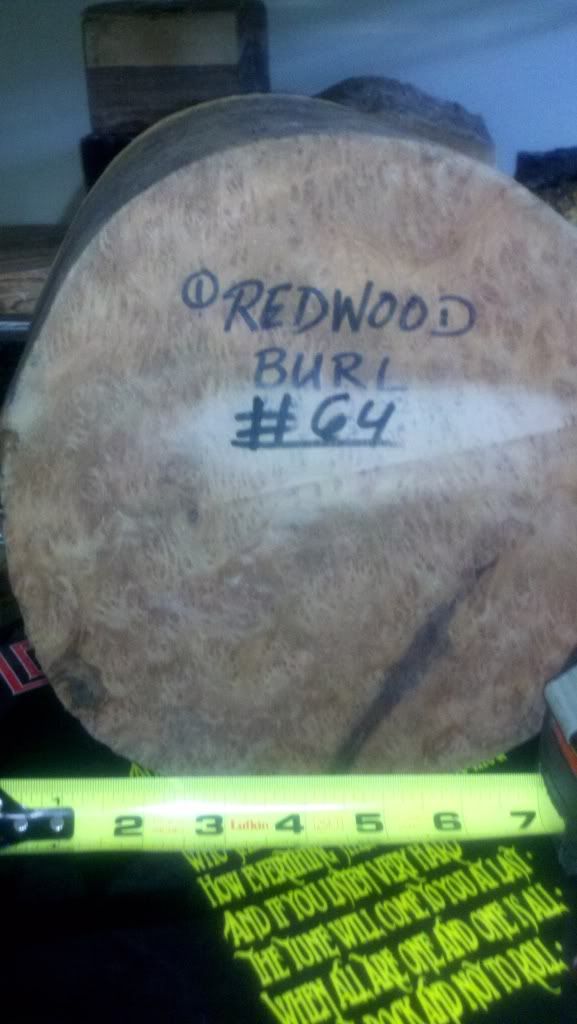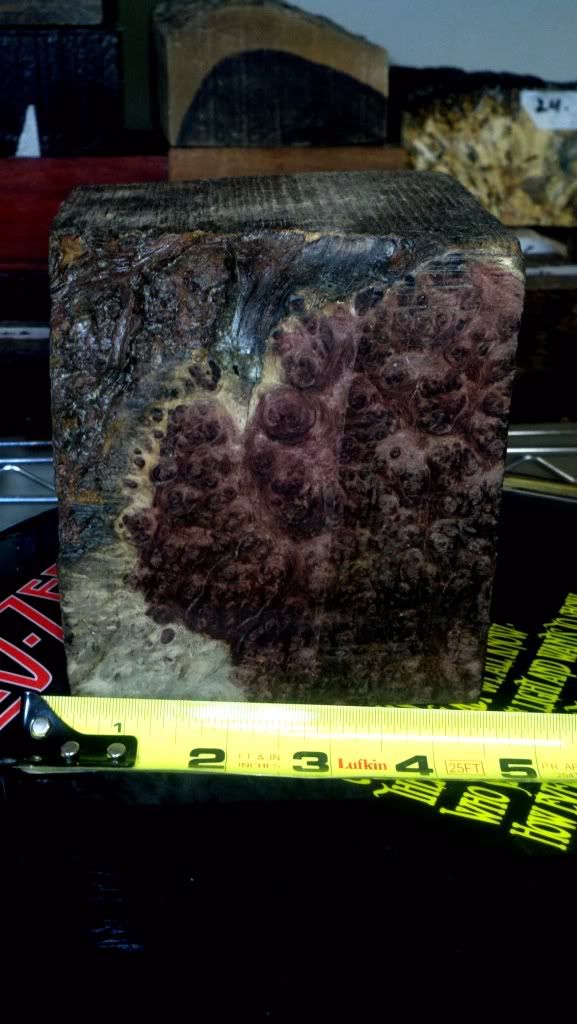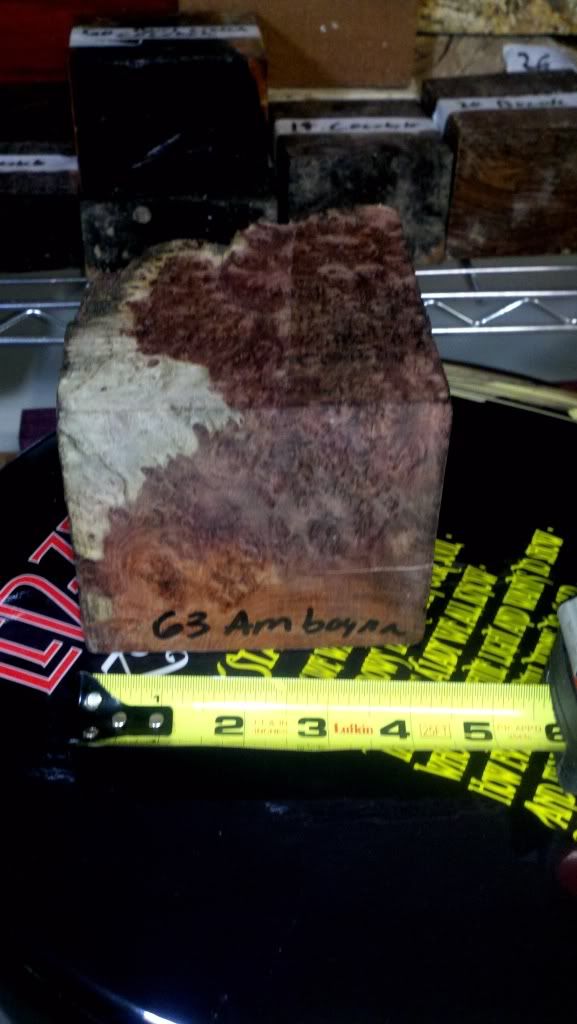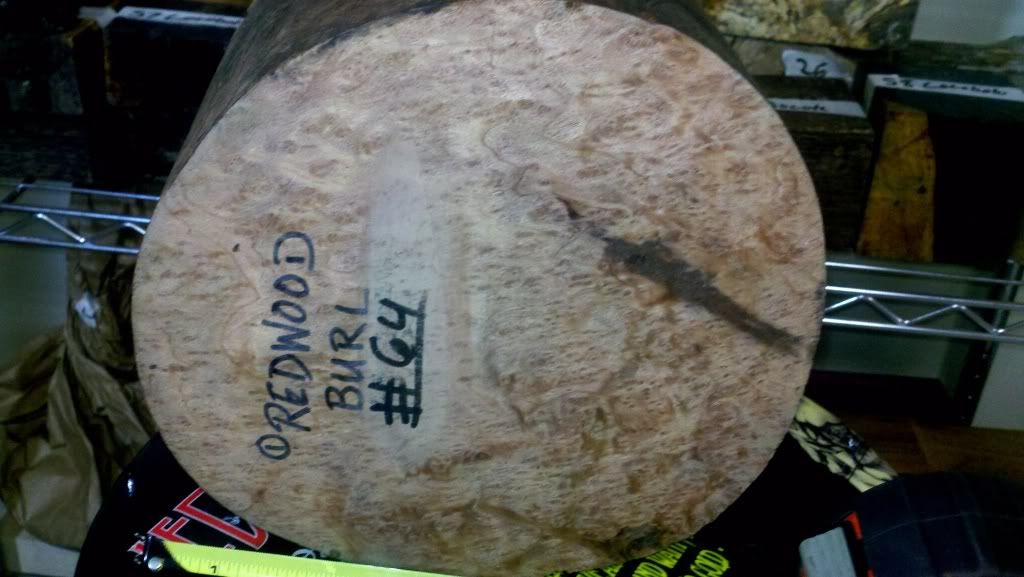I picked up some mad rare wood today specifically a huge piece of natural edge redwood burl the size of a average adults head , and a 5in by 5 in by like 3.75 in deep rich colored piece of amboyna burl. Neither of them have cracks but I want to stabilize them both so when I do turn them they have a better chance of not blowing out . I don't want to blow out a piece of amboyna burl I would cry like a baby . So I am wondering what should I use to stabilize them ? I don't want to do the weird baking or lab looking methods . I would prefer some kind of dip or injection or whatever .
Look at these babies ..
this would be the top of the bowl
this would be the side
the sick redwood burl bottom
the top of the monster thats a big barstool .
better view of the burl









 Reply With Quote
Reply With Quote




